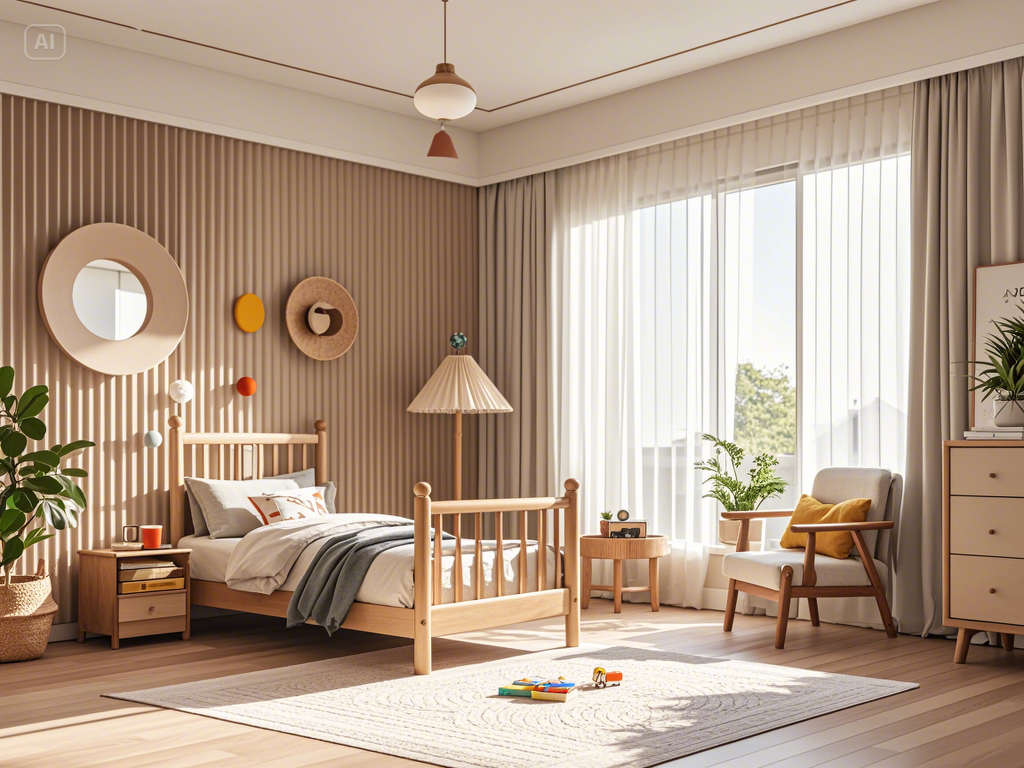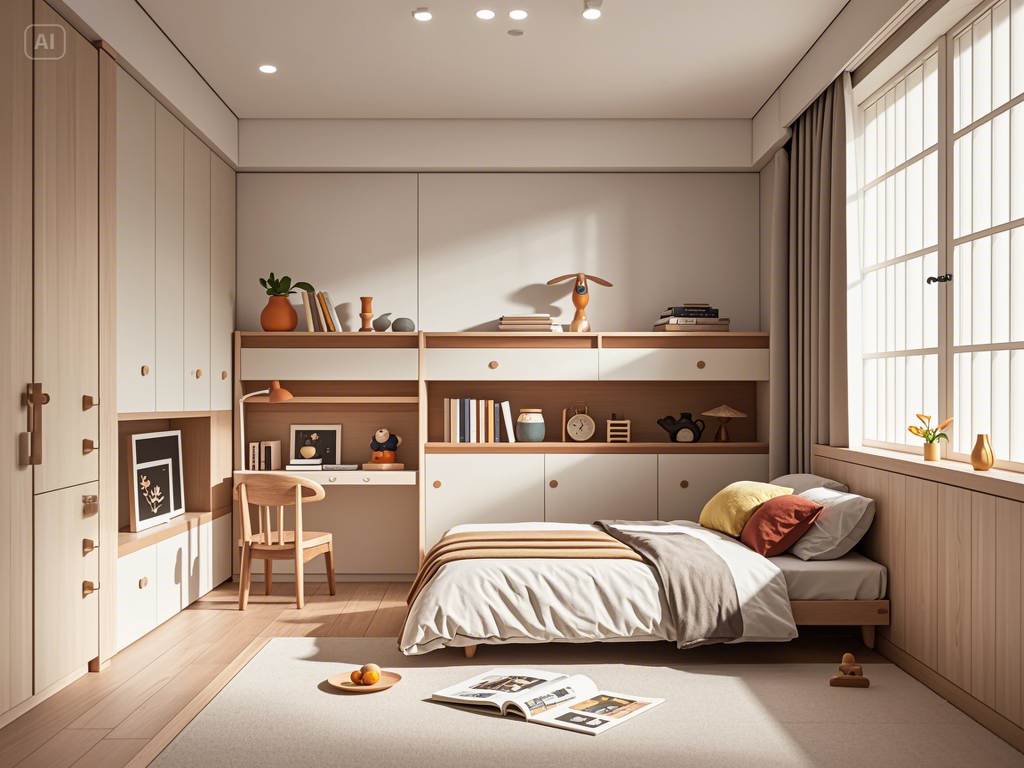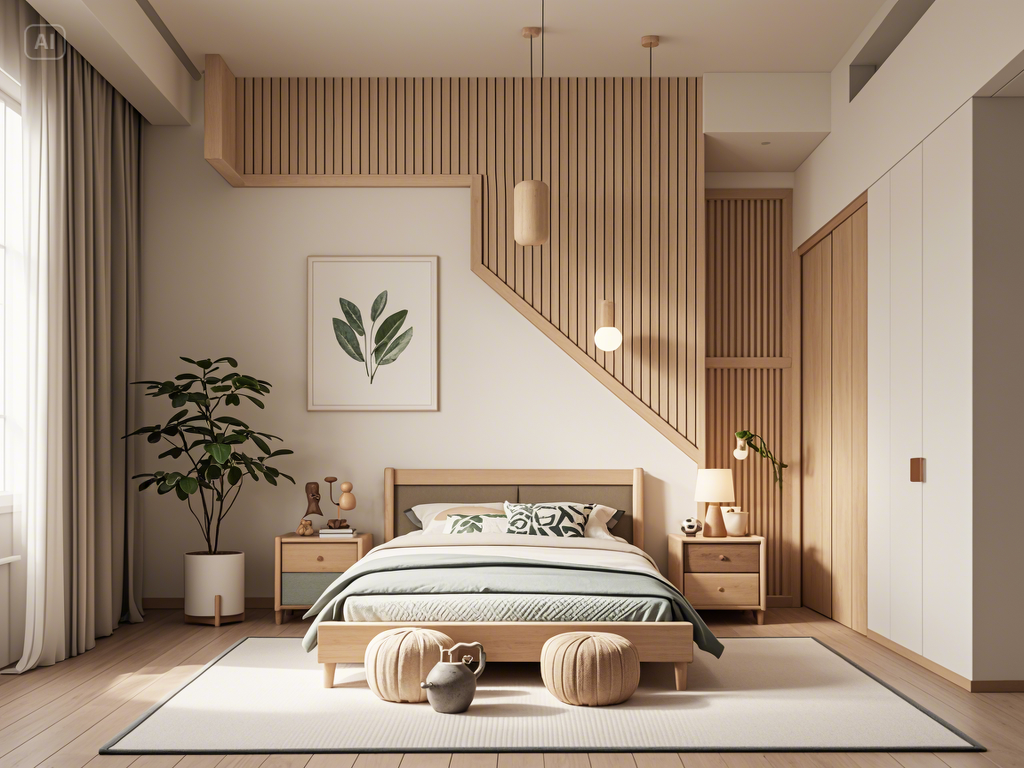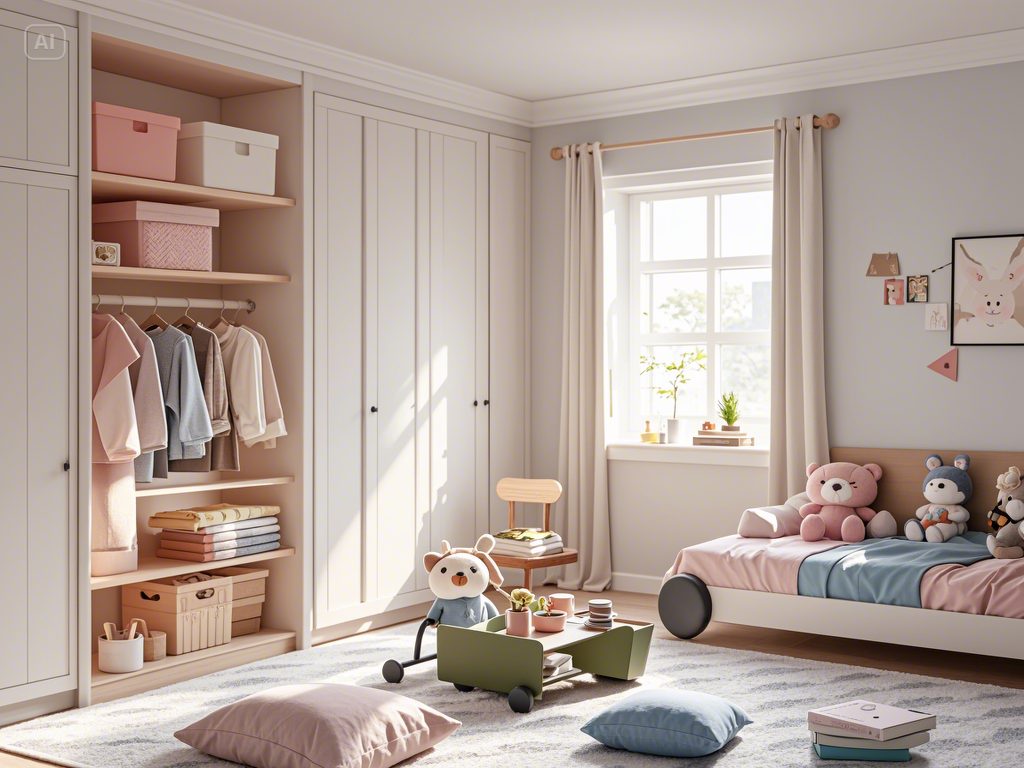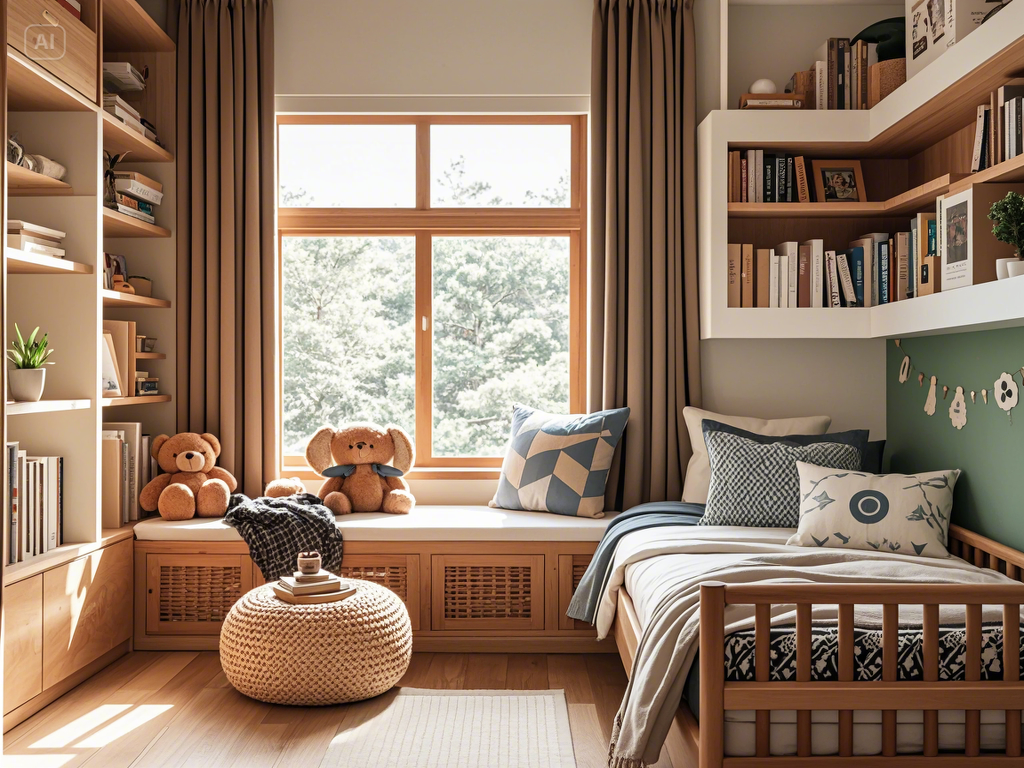Creating a kids’ bedroom that is both functional and stylish can be a challenging task. The Japandi style, a fusion of Japanese and Scandinavian design principles, offers a perfect blend of minimalism, functionality, and tranquility. In this article, we will explore 22 innovative Japandi kids’ bedroom interior design ideas that incorporate a variety of colors such as blue, red, white, orange, yellow, pink, and multi-color combinations to create a harmonious yet vibrant space.
Neutral Tones with Pops of Color
Start with a base of neutral tones like white, beige, or light gray, and introduce pops of vibrant colors such as blue and yellow through accessories like cushions, rugs, and curtains. This creates a calm and serene environment while still adding a playful touch.
Minimalist Furniture with Bright Accents
Opt for minimalist furniture pieces that are functional and have clean lines. Introduce bright accents such as a red chair or a colorful bookshelf to add interest without overwhelming the space.
Nature-Inspired Decor
Incorporate elements of nature into the room through wall decals, artwork, and bedding. Use colors like green, blue, and brown to bring a sense of the outdoors inside, creating a peaceful and relaxing atmosphere.
Soft Pastel Palette
A soft pastel palette of pink, mint green, and light blue can create a soothing and calming environment for a child’s bedroom. Use these colors on walls, bedding, and accessories to maintain a cohesive look.
Functional Storage Solutions
Japandi design emphasizes functionality. Incorporate smart storage solutions like under-bed drawers, built-in shelves, and multi-purpose furniture to keep the room organized and clutter-free.
Cozy Reading Nook
Create a cozy reading nook with a comfortable chair or floor cushions, a small bookshelf, and a soft, colorful rug. Use warm colors like orange and yellow to make the space inviting and encourage a love for reading.
Japanese Sliding Doors
Incorporate Japanese sliding doors, or shoji screens, to separate different areas of the room. These doors are both functional and add an authentic Japanese touch to the space.
Scandinavian-Inspired Bedding
Choose Scandinavian-inspired bedding with simple patterns and natural materials. Opt for colors like white, gray, and light blue to keep the room feeling airy and light.
Natural Light Maximization
Maximize natural light by using sheer curtains or blinds. This enhances the room’s brightness and makes it feel more spacious and open.
Playful Geometric Patterns
Incorporate playful geometric patterns in rugs, wall art, and bedding. Use a mix of colors like blue, red, and yellow to add a fun and dynamic element to the room.
Low-Profile Beds
Choose low-profile beds that are closer to the floor. This not only aligns with the minimalist Japandi style but also ensures safety for younger children.
Zen Garden Corner
Create a small Zen garden corner with elements like sand, rocks, and small plants. This can be a calming space for kids to unwind and relax.
Multi-functional Play Area
Design a multi-functional play area that can be used for various activities like playing, studying, and crafting. Use bright, cheerful colors like orange and pink to make the area stimulating and engaging.
Simple Wall Art
Choose simple, minimalist wall art that complements the overall color scheme. Opt for pieces that incorporate colors like blue, white, and gray for a cohesive look.
Mix of Textures
Incorporate a mix of textures through rugs, cushions, and bedding to add depth and interest to the room. Use materials like wool, cotton, and linen in various colors to create a tactile experience.
Personalized Spaces
Allow your child to personalize their space with their favorite colors and items. This could include a colorful gallery wall, a custom name sign, or their own artwork displayed prominently.
Indoor Plants
Introduce indoor plants to bring a touch of nature indoors. Use colorful pots in shades of blue, red, and yellow to add a vibrant touch.
Open Space Concept
Maintain an open space concept to ensure the room feels spacious and airy. Use furniture that can be easily moved or reconfigured to keep the room flexible and adaptable.
Colorful Tatami Mats
Incorporate colorful tatami mats in shades like green, blue, and pink to add a traditional Japanese element with a modern twist.
Use of Wood Elements
Utilize natural wood elements in furniture and decor. The warm tones of wood can be complemented with colorful cushions and throws in shades like orange, yellow, and red.
Tranquil Study Area
Create a tranquil study area with a simple desk and chair, and use calming colors like blue and white. Ensure the space is well-lit and free of distractions to promote focus and concentration.
Conclusion
Japandi style offers a beautiful and practical approach to designing kids’ bedrooms. By combining minimalist aesthetics with functional design elements and incorporating a variety of colors, you can create a space that is both serene and playful. These 22 ideas provide a foundation for creating a harmonious and vibrant bedroom that your child will love.

